El bordado ha sido durante mucho tiempo una forma de arte apreciada, Agregar belleza y diseños intrincados a varios textiles. Con avances tecnológicos, El bordado a máquina se ha vuelto cada vez más popular., Permitir costuras más rápidas y precisas.
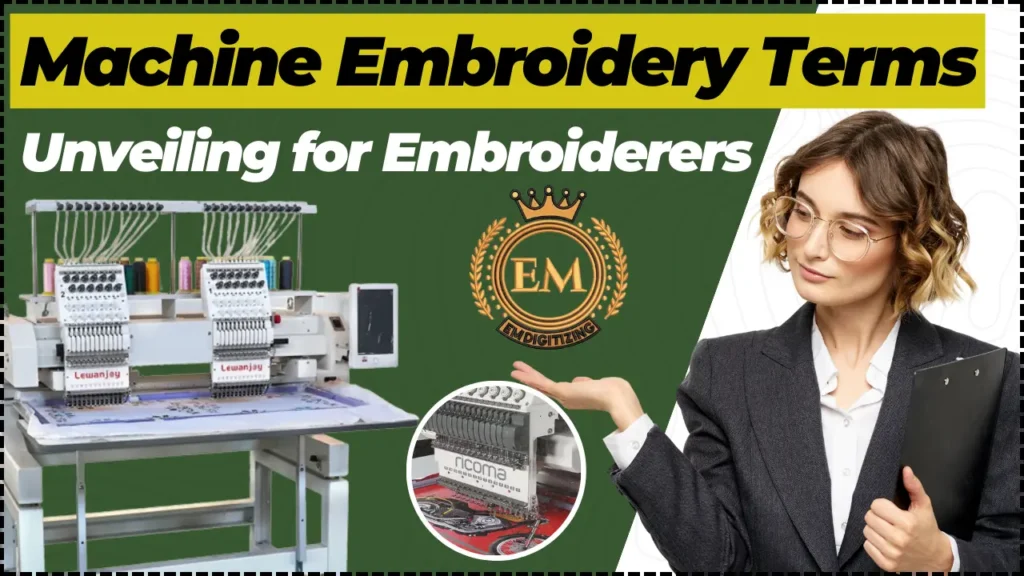
En este articulo, Exploraremos los términos y definiciones esenciales que cada bordador debe aprender, Proporcionarle una base sólida para mejorar sus habilidades y creatividad en el mundo del bordado de la máquina.
Términos de bordado a máquina: Presentación para bordadoras
Herramientas y equipos de bordado de máquina esencial:
Hay algunas herramientas y equipos esenciales utilizados en bordados, como:
Maquina de bordar:
La máquina de bordado es el corazón y el alma de bordado a maquina. It’;S una sofisticada pieza de tecnología que le permite dar vida a su visión creativa.
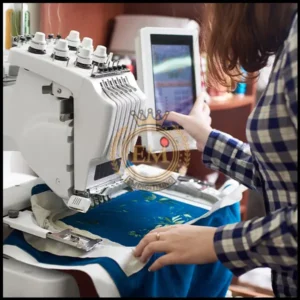
Desde máquinas básicas de nivel de entrada hasta modelos de alta gama con características avanzadas, there’;es un Maquina de bordar para adaptarse a cada nivel de habilidad y presupuesto.
Aros y Marcos:
Los aros y los marcos son herramientas esenciales que mantienen la tela tensa mientras la máquina cose el diseño. Vienen en varios tamaños y formas para acomodar diferentes proyectos de bordado..
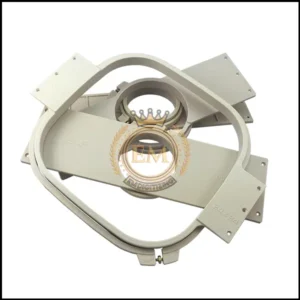
Whether you’;Trabajando en un pequeño monograma o una colcha grande, teniendo el aro derecho o el marco asegura que su tela permanezca en su lugar, resultando en bordados limpios y precisos.
Agujas de bordar:
miAgujas Blerogery están especialmente diseñados para manejar las demandas del bordado de la máquina. Tienen un ojo más grande y una ranura a lo largo del eje para evitar la rotura de hilos y asegúrese de coser suaves.
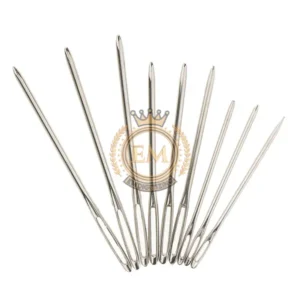
Usando la aguja correcta para su tela y Tipo de hilo es crucial para lograr resultados de aspecto profesional.
Estabilizadores y respaldos:
Los estabilizadores y los respaldos brindan soporte y estructura a la tela durante el bordado. Ellos prevenir arrugas, distorsión, y estiramiento, Asegurar que su diseño mantenga su forma y detalle.
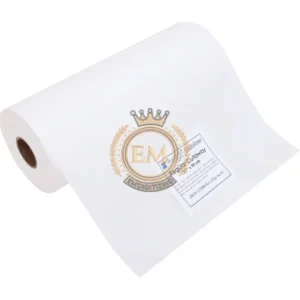
Hay diferentes tipos de estabilizadores y respaldos disponibles, como el desgarro, recortado, y soluble en agua, cada uno adecuado para diferentes telas y técnicas de bordado.
Comprender las puntadas de las máquinas de bordado:
Las máquinas de bordado ofrecen una variedad de tipos de puntadas para crear diferentes efectos en sus diseños.
Desde puntadas de satén para contornos suaves y puntadas de relleno para áreas sólidas hasta puntadas para contornos y detalles, Comprender los diferentes tipos de puntadas le permite experimentar y lograr el aspecto deseado.
Puntada de satén:
La puntada de satén es la puntada para crear suaves, denso, y líneas brillantes en bordado. It’;S perfecto para letras, fronteras, y diseños detallados.
Ajustando la longitud de la puntada, densidad, y tensión, Puede personalizar la puntada de satén para lograr varios efectos, de delicado e intrincado a audaz y llamativo.
Puntada de relleno:
La puntada de relleno se usa para cubrir grandes áreas con un patrón sólido o texturizado. Puede ser un patrón de cuadrícula simple o un diseño complejo, Dependiendo de su creatividad y las capacidades de su máquina.
Las puntadas de relleno agregan profundidad y dimensión a sus bordados, haciéndolo visualmente atractivo y capturando atención.
puntada corriente:
La puntada en ejecución es el tipo de puntada de bordado de máquina más simple y básico. It’;s compuesto por recto, puntadas continuas que crean contornos, fronteras, y detalles más finos.
Aunque puede parecer simple, La puntada en ejecución puede producir diseños elegantes y delicados cuando se usa creativamente.
Puntadas de recorte y salto:
Recorte y saltar puntos son términos utilizados para describir diferentes técnicas utilizadas durante el bordado de la máquina para Administrar hilo fines.
Las puntadas de recorte implican cortar el exceso de hilo después de cada cambio de color o al final de un diseño. Esto asegura que la parte posterior del bordado se vea limpia y ordenada..
Técnicas y estilos básicos de bordado:
Hay algunos estilos básicos que debes conocer, como:
Apliques:
Apliqué es una técnica donde las piezas de tela están en capas y cosidas en una tela base para crear diseños decorativos. Le permite agregar textura, color, y variedad a tu proyectos de bordado.
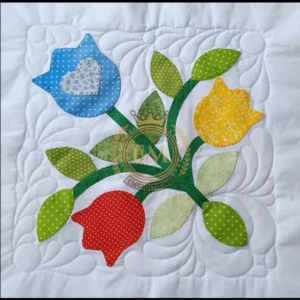
Desde formas caprichosas hasta diseños intrincados, Apliqué abre un mundo de posibilidades y le permite mostrar su talento artístico.
monogramas:
La monogramación es el arte de bordar iniciales o un diseño personalizado en la tela. Agrega un toque de sofisticación y elegancia a varios artículos como toallas, vestidos, y accesorios.
Whether you’;re Monogramación para ti o como regalo, it’;es una forma clásica y atemporal de dejar su marca.
Bordado de movimiento libre:
Bordado de movimiento libre, También conocido como boceto de hilos, le permite dibujar con hilo usando su máquina de bordado.
En lugar de seguir un patrón predeterminado, Te conviertes en el artista, Mover la tela debajo de la aguja para crear diseños únicos y expresivos. El bordado de la cámara libre ofrece una sensación de libertad y creatividad que puede resultar en piezas verdaderamente únicas.
Comprender los tipos de hilos de bordado:
Los hilos de bordado vienen en una variedad de tipos, cada uno con sus propias características y usos. Aquí hay algunos tipos comunes de hilo de bordado que debe saber:
- Seda artificial: Los hilos de rayón son conocidos por sus colores vibrantes y su suave brillo. Son populares para crear diseños de bordado intrincados debido a su alta resistencia a la tracción..
- Poliéster: Los hilos de poliéster son duraderos y resistentes a la decoloración, Hacerlos una opción popular para proyectos de bordado que requieren lavado o exposición frecuentes a la luz solar.
- Algodón: Los hilos de algodón son versátiles y excelentes para la máquina y bordado a mano. Tienen un acabado mate y a menudo son elegidos para diseños más naturales o de aspecto rústico..
- Metálico: Los hilos metálicos agregan un toque de brillo y brillo a los proyectos de bordado. Sin embargo, pueden ser un poco más complicados para trabajar debido a su tendencia a deshilacharse o romperse.
- hilo de canilla: Los hilos de bobina son livianos y se usan para la parte inferior del diseño de bordado. Ayudan a mantener la parte posterior del bordado ordenado y evitan el volumen.
Experimente con diferentes tipos de hilos para ver cuáles funcionan mejor para sus proyectos de bordado específicos. Don’;T tenga miedo de mezclar y combinar por efectos únicos!
Tensión y peso del hilo:
La tensión y el peso del subproceso impactan directamente la calidad del bordado de su máquina. La tensión adecuada asegura que las puntadas sean uniformes y seguras, mientras que el peso del hilo afecta la densidad y la apariencia del diseño.
La tensión del hilo se refiere a la cantidad de resistencia que los hilos superiores e inferiores se ejercen entre sí. Si la tensión es demasiado floja, Las puntadas pueden estar sueltas o desiguales. Por otro lado, Si la tensión es demasiado apretada, la tela puede fruncir o el hilo puede romperse.
El peso del hilo se refiere al grosor del hilo.. Los hilos más gruesos crean puntadas más prominentes y pueden agregar textura a sus diseños. Hilos más delgados, por otra parte, son mejores para detalles intrincados y líneas finas.
Encontrar el equilibrio correcto entre tensión y peso del hilo puede requerir alguna prueba y error. Ajustar la tensión y experimentar con diferentes pesos de hilos lo ayudará a lograr los resultados deseados en sus proyectos de bordado. Recuerda, la práctica hace la perfección!
Dominar el software de bordado de la máquina y la digitalización:
El software de bordado de la máquina es donde ocurre la magia. Let’;S sumergido en lo básico y más allá!
software de bordado:
software de bordado ¿Está el cerebro detrás de tu máquina?. Te permite editar, cambiar el tamaño, y personaliza tus diseños.
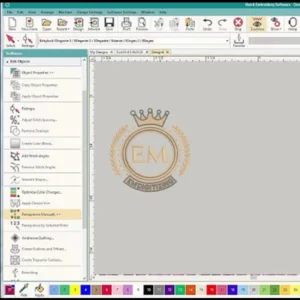
Con el software adecuado, Incluso puedes crear tus propios diseños desde cero. Las posibilidades son infinitas!
Digitalización de bordados:
Digitalización de bordados es el proceso de convertir una imagen o diseño en un formato digitalizado que puede ser cosido por una máquina de bordado.
Esto implica el uso de un software especializado para crear un digital archivo de diseño de bordado que la máquina puede interpretar.
Formatos de archivos de bordado:
Los archivos de diseño de bordado vienen en varios formatos, incluido el horario de verano, Exp, PSA, y más. Estos archivos contienen las instrucciones de la máquina de bordado para coser el diseño con precisión.
Las diferentes máquinas de bordado pueden requerir específicas formatos de archivo, so it’;s esencial para verificar la compatibilidad antes de usar un archivo de diseño.
Densidad de bordado:
La densidad de bordado se refiere a la cantidad de puntadas por pulgada cuadrada en un diseño de bordado. Afecta la apariencia general, textura, y estabilidad del diseño. El bordado denso crea resultados más sólidos y opacos, Mientras que la densidad más ligera permite que se muestre más tela.
Comprender la densidad de bordado es vital para lograr el efecto deseado en sus proyectos de bordado. Puede ayudarlo a determinar el peso apropiado del hilo, longitudes de puntada, e incluso el tipo de estabilizador necesario.
Conclusión:
En conclusión, Familiarizarse con los términos y definiciones de bordado de la máquina clave es el primer paso para convertirse en un bordador competente.
Por Comprender las herramientas, técnicas, puntadas, y materiales asociados con el bordado de la máquina, Estará equipado para dar vida a sus visiones creativas con precisión y delicadeza.. Si está creando regalos personalizados, embellecimiento de prendas, o explorar expresiones artísticas, El conocimiento obtenido de este artículo sin duda mejorará su viaje de bordado.
Asi que, sumergirse, explorar, Y deja que tu imaginación se dispare a medida que te aventuras en el cautivador mundo del bordado de la máquina.
EMdigitalización: El experto en digitalización de bordado que necesita:
Si necesita ayuda para transformar sus increíbles diseños en bordados, then you’;he venido al lugar correcto!
Permítanos presentarles a Emdigitizing, el mejor experto en digitalización de bordado!
Emdigiting es el lugar de referencia para todas sus necesidades de digitalización de bordados. Nos especializamos en esta técnica genial y tenemos una oferta increíble solo para ti.. If you’;eres un cliente nuevo, Prepárate para una asombrosa 50% descuento en todos nuestros servicios. Que asombroso es eso?
Nuestro equipo de expertos es súper hábil en la digitalización. Qué significa eso?
Bien, they take your design and carefully transform it into a digital format that’;s perfecto para bordado. Trabajan su magia rápidamente y sin romper el banco. Asi que, Puedes tener tu diseño listo para coser en poco tiempo!
Si tiene alguna duda o pregunta, don’;no te preocupes!
Nuestro equipo siempre está aquí para ayudarte. Solo comuníquese con nosotros, and we’;Volveré a ti más rápido. We’;RE FRAFY, útil, y listo para ayudarlo en cada paso del camino.
Si encuentra útil esta información, ¿Por qué no compartirlo con tus amigos??
Hágales saber sobre Emdigitizing y los increíbles servicios que ofrecemos. They’;LL gracias por ello, and you’;Será el héroe de bordado entre tus amigos!
Preguntas frecuentes:
El bordado es una nave fascinante que viene en diferentes tipos. Los dos tipos principales de bordados de la máquina son el movimiento libre y computarizado.
El bordado implica el uso de diferentes puntos para crear diseños hermosos. Hay seis puntos de bordado fundamentales que cada principiante debe saber. puntada corriente, Pespunte, Puntada de satén, puntada de tallo, Nudo francés, Margarita.
If you’;Estoy pensando en meterse en el bordado de la máquina, Aquí están las cinco principales máquinas de bordado en 2023:
- Hermano SE600
- Hermano SE1900
- Bernette b79
- Artesanía de la memoria de Janome 14000
- Artesanía de la memoria de Janome 9850
Las puntadas de bordado pueden variar en dificultades, Pero una puntada que a menudo se considera desafiante es el nudo de lingotes. Parece una bobina complicada y requiere precisión y paciencia para crear.
